Due to environmental pollution and overhunting, many rare animals in the ocean are facing the crisis of extinction. This article will introduce the top ten rare aquarium/52-marine-animals.html">marine animals, including the vaquita porpoise, gray whale, sea otter, monk seal, American manatee, blue whale, leatherback turtle, great white shark, whale shark and bluefin tuna. The following are the details, let’s find out together!
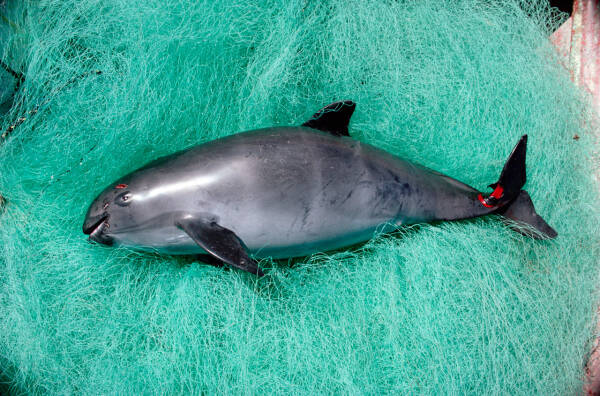
1. Gulf porpoise (less than 30 individuals)
The vaquita is one of the smallest members of the cetacean family, with a thick body and a striking dorsal fin that is almost like a shark's fin. Their heads are rounded and have barely noticeable beaks. There are dark circles around the eyes. There are complex and dull gray markings on the body, which appear olive or tan in certain lights, and observers often describe them as "dark". Their limited habitat area and vulnerability to being caught in fishing nets are the main reasons why they are endangered. According to field observations, the highest number of Gulf porpoises reached more than 1,000, while the lowest number was only 39. By 2018, it had dropped to only 12.
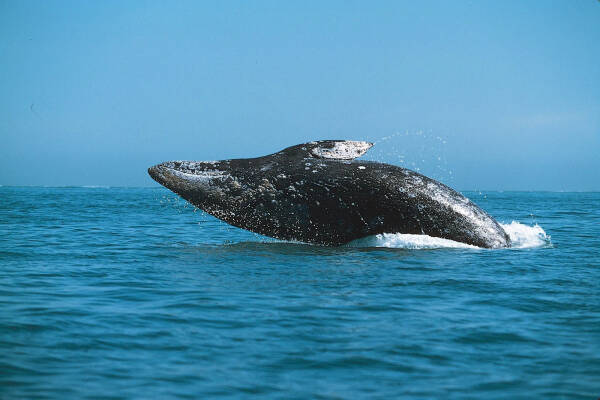
2. Gray whale (100-300 heads)
Gray Whale belongs to the gray whale family of the suborder Cetacea. It is larger than the baleen whale species, but smaller than the right whale. Adult gray whales can reach 10 to 15 meters in length, and the heaviest can even exceed 35 tons. They have a spindle-like body shape with a huge trunk, thickest near the flippers and tapering towards the tail. Gray whales are dark gray when young and brownish gray to light gray as adults. Its body is covered with light-colored markings and white to orange-yellow patches formed by whale lice and barnacles. These patches of ectoparasites become one of the species' unique features. In the Western Pacific, there are only about 100 to 300 gray whales, and they are listed as a critically endangered species.
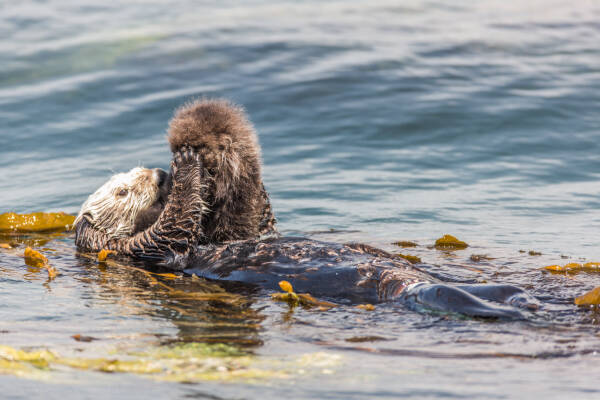
3. Sea Otter (1,000 heads)
Sea Otter (Sea Otter) is an animal belonging to the genus Sea Otter of the Mustelidae family. Its body length is about 130-150 cm, its weight is between 30-50 kg, and its tail is about 30-40 cm long. Male sea otters are slightly larger than females. Their forelimbs are short and exposed, while their hind limbs are long and flat. They have webbed toes to form fins, making them ideal for swimming and diving. At night, they wrap seaweed around their bodies and sleep on the waves to prevent them from being washed away, while several sea otters take turns keeping watch. They are mainly found in the cold waters of the North Pacific.
Sea otters have relatively thin subcutaneous fat, but their fur is very dense, with an astonishing 125,000 hairs growing per square centimeter of skin, the highest in the animal kingdom. This high-quality fur attracts humans to hunt them. By 1911, there were only about 1,000 sea otters left in the world, and conservation efforts later allowed them to recover.
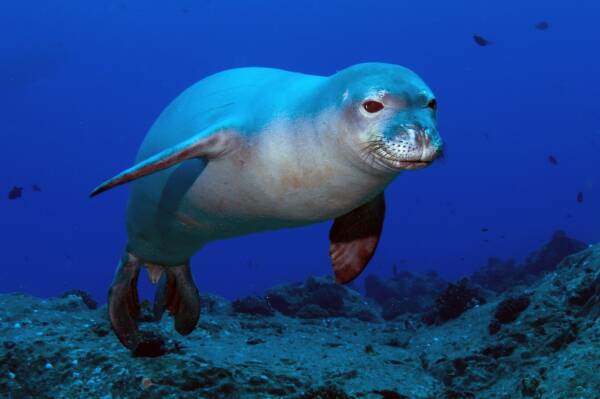
4. Monk seals (1,500 heads)
The Monk Seal is an ancient and rare seal and the only seal in the world that lives its entire life in tropical waters. Compared with ordinary seals, monk seals are slightly larger, with a short and wide snout and a high and rounded forehead. They have no external ears but have excellent hearing abilities. The monk seal's face is covered with black and thick beards, and its eyes are large and bright. There are three types of monk seals in the world: Hawaiian monk seals, Mediterranean monk seals and Caribbean monk seals.
The Caribbean monk seal has not been observed since its discovery in the 1850s, raising doubts that it is extinct. The Mediterranean monk seal was once plentiful, but is now on the verge of extinction, with only about 500 estimated to be left. The situation of Hawaiian monk seals is not optimistic either, with only about 1,500 surviving.
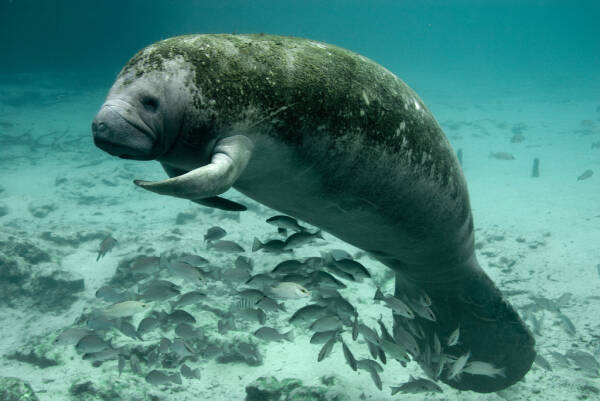
5. American Manatee (2,600 heads)
The American manatee is also known as the North American manatee, Caribbean manatee, West Indian manatee and Florida manatee. They are docile and easy-going animals, mainly found in the Atlantic coast and Caribbean Sea in the middle and low latitudes of America. In the past, people thought that female Manatees-Are-Endangered.html">manatees held their babies and raised their bodies upright on the water to breastfeed, which was very similar to the way humans breastfeed, so they were called "mermaids." Manatees have relatively poor hearing abilities.
According to reports, hundreds of Manatees-Are-Endangered.html">manatees are killed every year around the Florida peninsula alone by propellers and high-speed speedboats. In order to prevent manatees from becoming the dinosaurs they once were, people began to establish various organizations and clubs to promote and protect manatees. Currently, there are only about 2,600 Caribbean cattle left, and some say there are only about a thousand.
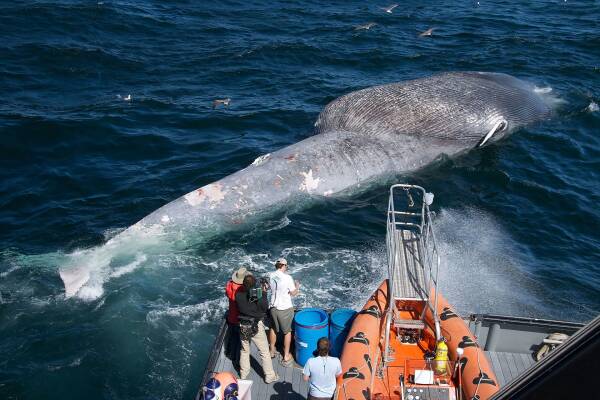
6. Blue whale (3000-4000)
The blue whale is a marine mammal that belongs to the suborder Baleen whales and has four subspecies. It is believed that the blue whale is the largest known creature on earth, reaching a length of 33 meters and weighing 181 tons. They have slender bodies and a bluish-gray back, but when observed in the water, the color sometimes appears lighter.
At the beginning of the 20th century, blue whales existed in considerable numbers in almost all waters around the world. However, over the next 40 years, crazy whaling activities almost brought it to the edge of extinction. It was not until the international community began to protect blue whales in 1966 that the number gradually recovered. Since the whaling ban was implemented, the global number of blue whales has remained basically stable, around 3,000 to 4,000.
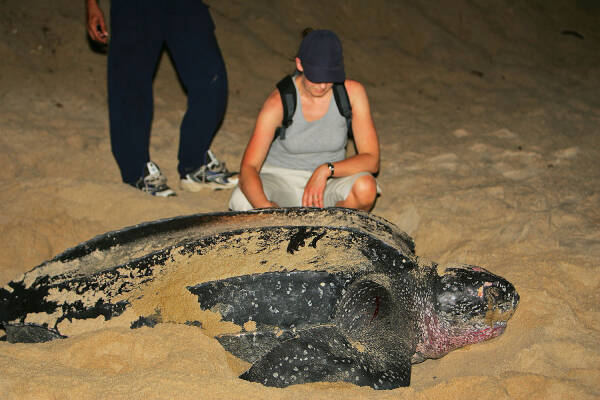
7. Leatherback turtles (2000-5700)
The leatherback turtle is a reptile belonging to the family Leatherbackidae and is classified in the genus Leatherback. They are huge and are among the largest species in the order Turtles. Leatherback turtles have a broad head, short neck, and short tail. Their limbs are paddle-shaped and have no claws, especially the forelimbs. Leatherback turtles are cold-blooded animals with excellent swimming abilities and are omnivorous. Each year between May and June, they lay between 90 and 150 eggs. Leatherback turtles mainly inhabit the middle and upper layers of tropical waters and are distributed in the Atlantic and Pacific waters.
According to a 2010 report, American animal activists launched a campaign to save the Pacific leatherback turtles, aiming to protect the remaining 2,000 to 5,700 Pacific leatherback turtles in the world. This initiative aims to ensure the survival and reproduction of this precious species. Let’s work together to protect these leatherback turtles to protect the diversity and health of our ocean ecosystems!
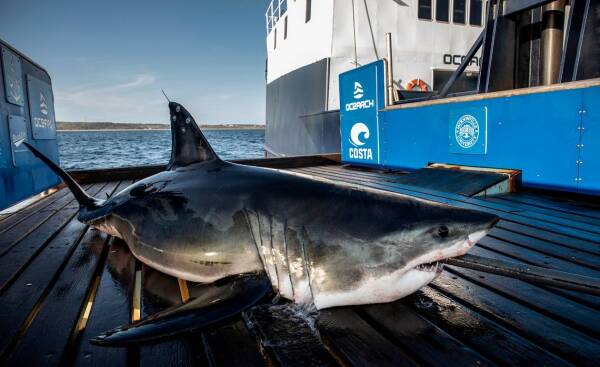
8. Great white shark (less than 3,000 heads)
The Great White Shark is a world-famous and ferocious shark that even stars in several movies and games. However, the living conditions of great white sharks are extremely difficult. Their numbers are gradually decreasing, they are on the verge of extinction, and they are listed as a protected species in the world. In the 1990s, great white sharks were slaughtered and fished without restraint, 98% of which were for their fins and meat to meet the huge demand for shark fin soup. Because great white sharks reproduce slowly, the population has never recovered. As of 2019, there are less than 3,000 great white sharks in the world, fewer than the number of wild tigers.
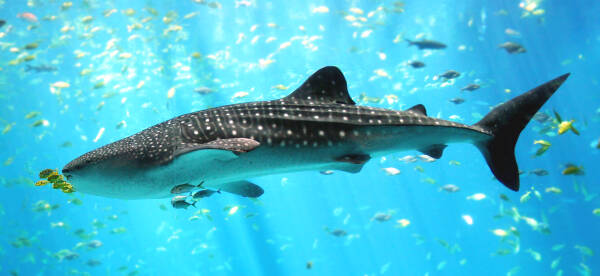
9. Whale shark (about 7,000)
The whale shark is one of the largest known fish, reaching a length of more than 20 meters. Because whale sharks are so large and have skin up to 15 centimeters thick, they can effectively resist attacks from other creatures, so they have almost no natural enemies. However, human fishing activities have become one of the main reasons for the decline in whale shark numbers. Whale sharks are targeted by fisheries in some areas where they gather seasonally. Southeast Asia and Taiwan are the main fishing locations. The whale sharks caught are mainly used for their meat, and sometimes their fins are cut off to make shark fins. Over the past nearly 80 years, the global population of whale sharks has plummeted by 50%, with only about 7,000 wild individuals remaining in 2019.
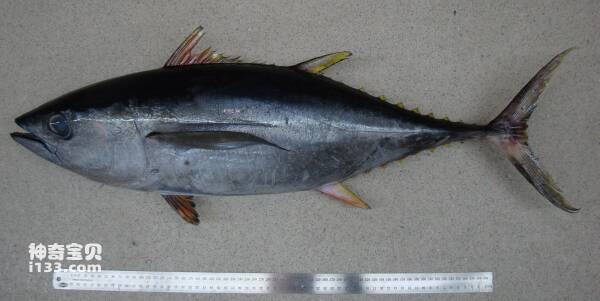
10. Bluefin Tuna (less than 10,000)
Bluefin tuna is one of the largest tuna species and is very popular in Japanese seafood sashimi cuisine. However, the global bluefin tuna population has been greatly reduced due to its slow growth and overfishing. EU fisheries experts have warned that bluefin tuna may face the threat of extinction if fishing is not restricted. The International Union for Conservation of Nature lists bluefin tuna at the highest level of endangered species in the wild. By 2019, the number of individual bluefin tuna in the world was less than about 10,000, which is a worrying figure.

The list of the top ten rare aquarium/52-marine-animals.html">marine animals is mainly recommended based on the number, endangerment and other relevant information of each marine animal, and comprehensively refers to the relevant rankings/lists on the Internet. The list is for reference only to help you understand what rare aquarium/52-marine-animals.html">marine animals are. If you have any questions, please leave comments/criticisms at the end.
animal tags:
We created this article in conjunction with AI technology, then made sure it was fact-checked and edited by a Animals Top editor.